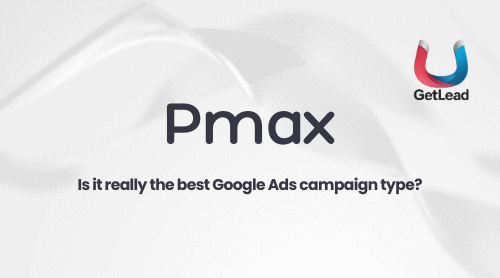PMAX Strategy: Why Relying Solely on Performance Max Isn’t Enough for Google Ads Success

If you’re running Google Ads, you’ve probably heard a lot about Performance Max (PMAX) campaigns. Many marketers wonder: Is PMAX the best Google Ads campaign? Or, what’s the right PMAX strategy? And most importantly, how do you optimize PMAX for real, profitable growth?
Let’s break down what makes a strong PMAX Google Ads strategy, and why simply letting the algorithm take over isn’t enough.
What Is PMAX in Google Ads?
Performance Max, or PMAX, is Google’s fully automated campaign type. It uses machine learning to serve ads across all Google channels: Search, Display, YouTube, Discover, Gmail, and Maps. The promise is simple: let Google’s algorithm optimize your ads, placements, and bids to drive conversions.
But here’s the catch: relying solely on PMAX isn’t a strategy. It’s just letting the algorithm take the wheel. And while automation can get things moving, it’s not a substitute for a thoughtful, data-driven approach.
Why PMAX Alone Isn’t a Complete Strategy
If your goal is real, profitable growth, you need more than a set-it-and-forget-it approach. PMAX can be powerful, but it works best when it’s layered on top of a solid foundation.
Before you start scaling with PMAX, make sure you’ve nailed the basics:
- A strong offer that resonates with your audience
- High-converting landing pages that turn clicks into customers
- A clear understanding of your audience’s needs and behaviors
- Well-structured search and shopping campaigns that provide valuable data
PMAX isn’t your foundation. It’s the layer you add once your Google Ads account is already in good shape. Here’s why: PMAX needs data. Without enough meaningful signals, the algorithm is flying blind and can’t optimize effectively.
How to Optimize PMAX for Better Results
A winning PMAX strategy goes deeper than just turning on automation. Here’s what real optimization looks like:
- Know your product mix inside out. Understand which products drive the most value and where your margins give you room to grow.
- Align your campaigns with how your audience actually buys. Map out the customer journey and tailor your messaging to each stage.
- Decide which parts of the funnel to target, and with what message. Not every campaign should have the same goal or creative.
- Manage your budget across PMAX placements (search, shopping, display, and video) so you’re not over-spending on Display or video. More on how to analyze this in our blog about PMAX channel reporting.
- Act on data, not just gut feeling. Regularly review your performance, test new ideas, and adjust your approach as you learn.
The Best PMAX Google Ads Accounts Use a Hybrid Approach
The accounts that scale fastest don’t rely on PMAX alone. Instead, they use PMAX alongside a well-structured Google Ads account that includes:
- Properly segmented search campaigns for branded, non-branded, and competitor terms
- Shopping campaigns with clear priorities
- YouTube, Display, or Demand Gen campaigns for top-of-funnel awareness and remarketing
- Scripts, rules, and custom reporting to guide the account and keep everything on track
Is PMAX the Best Google Ads Campaign?
PMAX can be incredibly effective, but it’s not a silver bullet. The best results come from combining smart automation with a deep understanding of your business, your audience, and your goals. PMAX is a powerful tool, but it works best as part of a broader, well-thought-out Google Ads strategy.
Final Thoughts: Building a Winning PMAX Strategy
If you want to get the most out of PMAX Google Ads campaigns, focus on building a strong foundation first. Use PMAX to enhance your strategy, not replace it. Automation can amplify your efforts, but it can’t substitute for real marketing expertise and a data-driven approach.
Automation is a tool. Strategy is what makes it work.